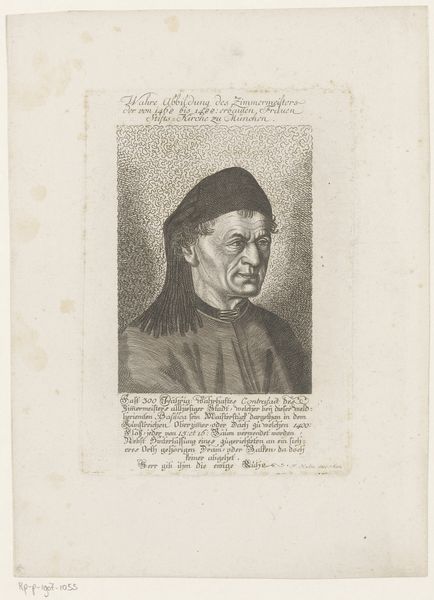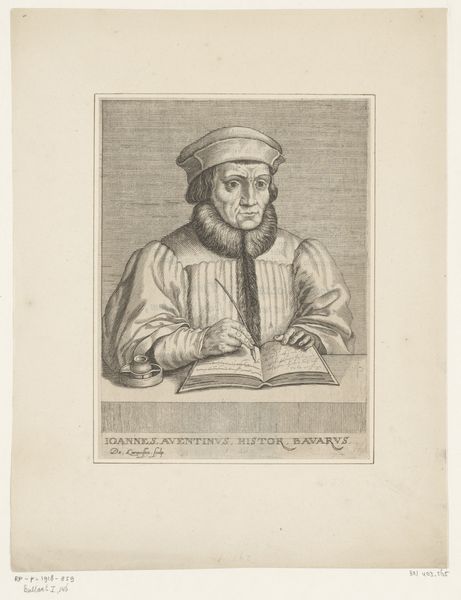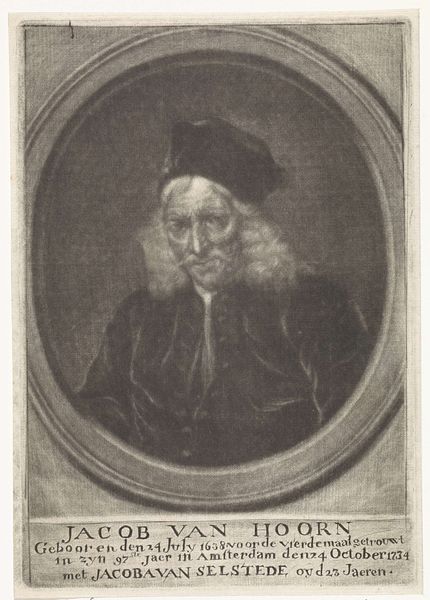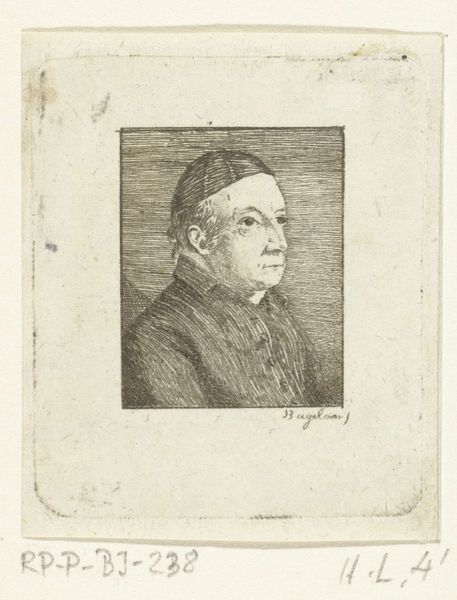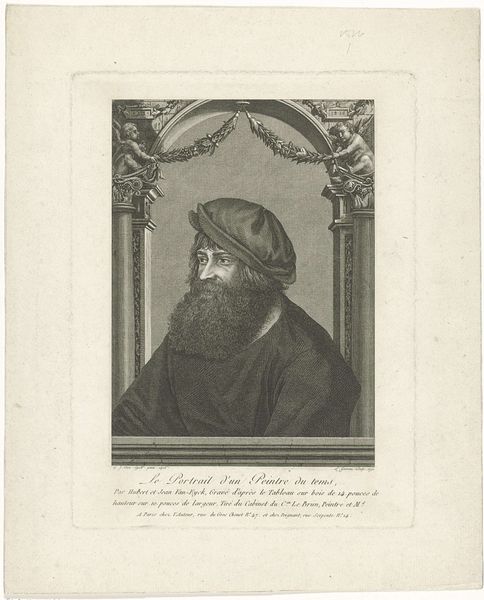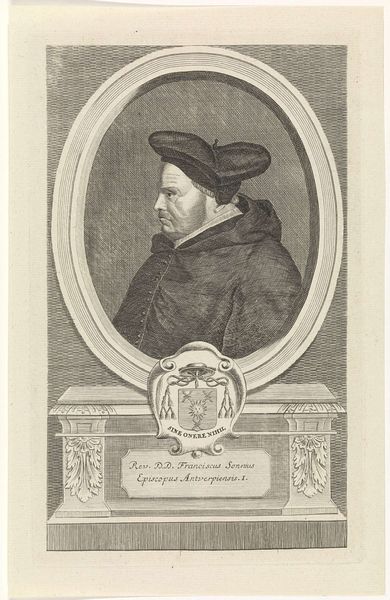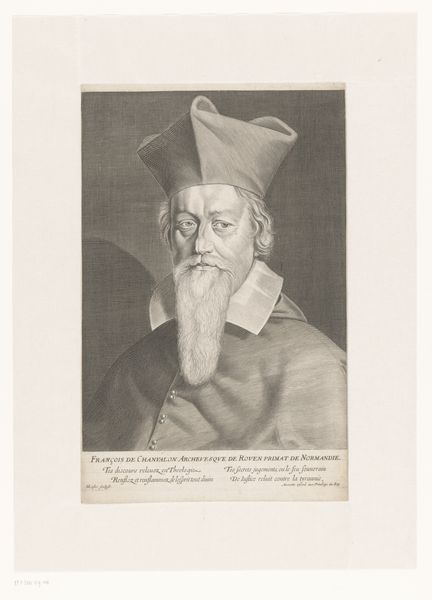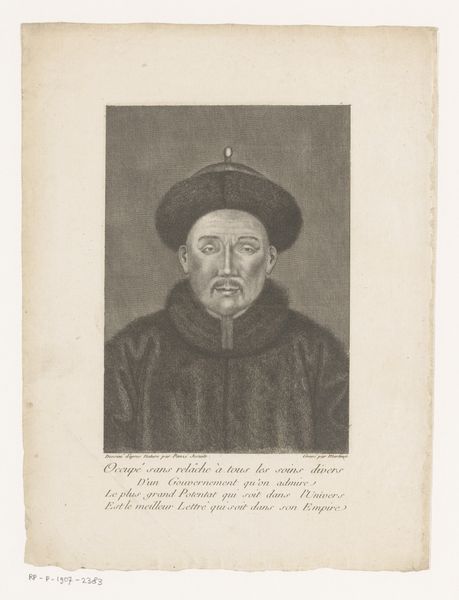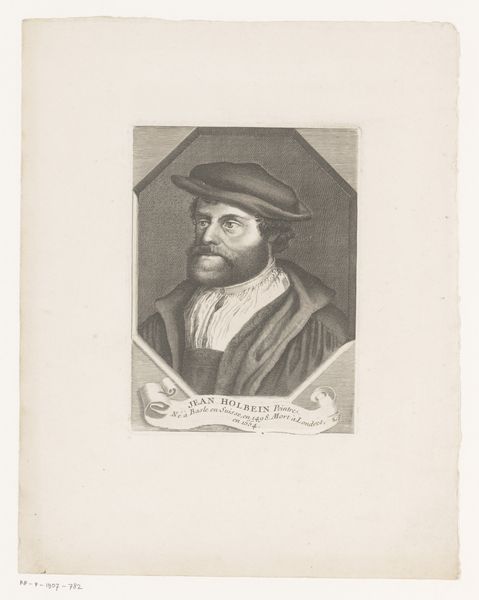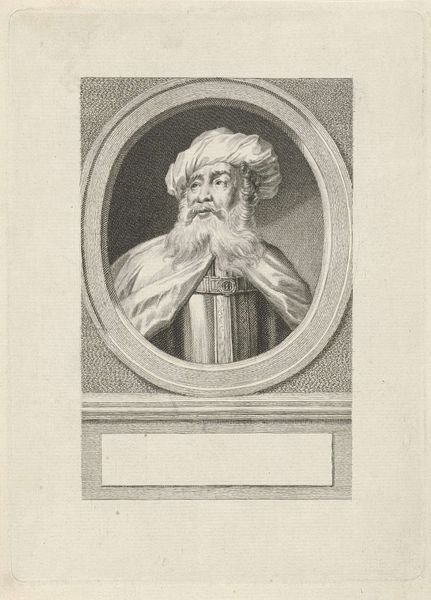
Dimensions: height 205 mm, width 155 mm
Copyright: Rijks Museum: Open Domain
Editor: So here we have “Oude man met grijze baard en muts,” or “Old Man with Grey Beard and Cap,” an engraving dating from around 1750 to 1800, by G. van Citters. It's really striking; the detail achieved with just the engraving lines is quite remarkable. What do you make of it? Curator: It’s interesting to consider this engraving in its socio-economic context. The production of prints like this was becoming increasingly accessible in the 18th century. We must ask how the labour involved affected the content of the image, and the intended audience? Editor: You mean, was it aimed at a different segment of society than a painted portrait would be? Curator: Precisely. The materials—the copper plate, the paper, the ink—and the repeatable nature of engraving meant a wider distribution, reflecting shifting patterns of consumption. This engraving offered a likeness of a person, perhaps otherwise unavailable to certain groups of people. Who was he and why reproduce his image in this way, at a cost accessible to broader levels of society? Editor: I see! It wasn't just about artistic skill, but also the materials, labour, and distribution that gave the image meaning. Curator: Exactly. How does the relatively reproducible nature of the engraving medium impact the very idea of a “portrait” during this period, in relation to painting? Editor: That makes me think about how this one image might have been circulated and what kinds of copies, modifications, or translations appeared afterward. The labour would likely be subdivided between the master and his shop. Curator: Good thinking! Consider how labor affects value, and consumption impacts artistic creation. Editor: So much more than just a picture of an old man! Thinking about the means of production opens up so many questions. Curator: Absolutely. It encourages us to examine how social factors directly impact artistic outputs.
Comments
No comments
Be the first to comment and join the conversation on the ultimate creative platform.
